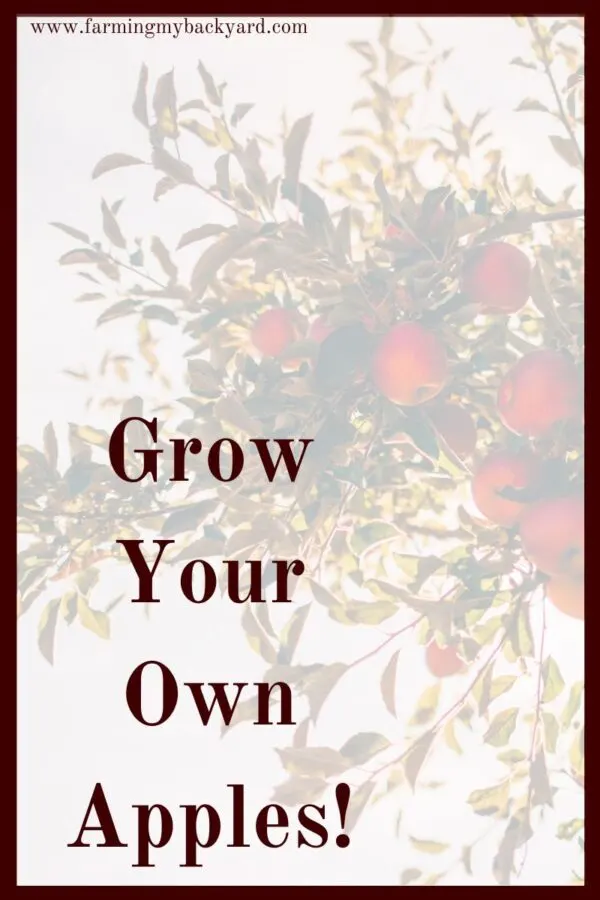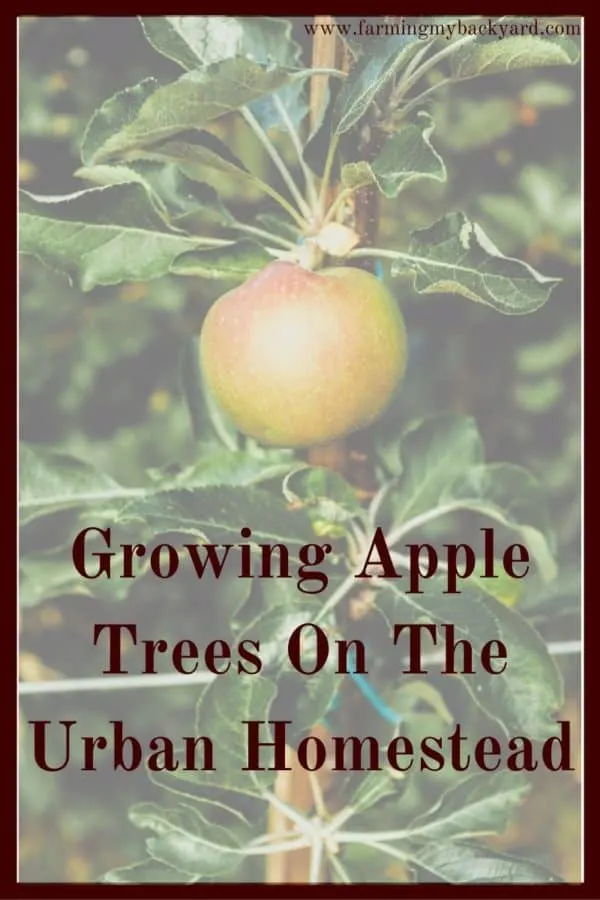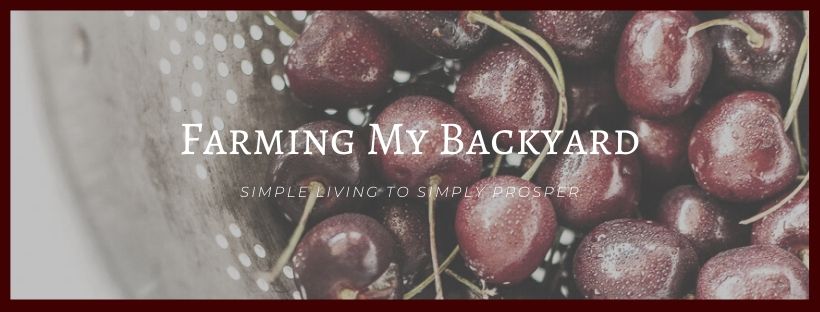Apple trees are a delicious addition to your backyard orchard, but they can be a bit fussy to grow. Here are some tips on growing apple trees!

Related Posts:
- 44 Insectiary Plants For Your Fruit Tree Guild
- 55 Trees That Are Great For Fruit Tree Guilds
- How To Start A Fruit Tree Guild
- These Are The Best Plants To Suppress Grass Around Fruit Trees
- How To Plant Fruit Trees
- What Are The Best Nitrogen Fixers?
- Here’s Why Our Cities Need More Urban Permaculture
- 17 Dynamic Accumulators You Need In Your Food Forest
- Vines You Should Grow in Your Fruit Tree Guild
- Best Plants To Chop and Drop In Your Fruit Tree Guild
- The Most Popular Plants For Fruit Tree Guilds
Tips On Growing Apple Trees
Apples are one of the most popular fruits to eat, and can grow well in many different places in the United States. There are are a few considerations you need to make before getting into the yard and planting your trees.
Planting Apple Trees
Some apple varieties are very susceptible to pests, especially on the East coast. Before deciding what to plant, try to find out what common pests and diseases affect your area and plant resistant apple varieties. You will save yourself much time and effort right from the start!
Apple trees also need a certain number of hours each year of temperatures between 32 and 45 degrees. These are called chill hours. Make sure whatever variety you decide to plant will get the correct number of chill hours in your climate, or they will not fruit. If you are in a warm climate select varieties that need fewer hours of cold weather.
And finally, you will most often need two tees for cross pollination. These should be withing 2000 feet of each other at most. Also make sure they flower near the same time, as some varieties flower and produce at different times. If you have the space, you can even grow at least two trees that will produce early, mid, and late seasons! This is a great way to stagger your crops, so that you have fresh apples from August to October.
When choosing the best location for your trees, think about the micro climates within your yard. Planting your apple trees on the north side of house can help protect the tree from premature flowering on warm winter days.
You also want them to have good air circulation to prevent fungal disease and morning sun to discourage mildews. Apple trees need full sun, which is 8 hours of sun per day, although in very hot areas they will need protection from scorching afternoon sun.
Full size trees should be planted 15-18 feet apart. Dwarf trees need as little as 4-8 feet! Many trees may need a support pole or trellis while growing, with dwarfs almost certainly needing some sort of support for their crop such as a trellis or fence.
With all those decisions taken care, of the final detail is to plant during the right time of year. If you are in a cold area, plant in the spring. Warmer areas should plant in the fall. For more details about planting fruit trees, check out How To Plant Fruit Trees.
Once your trees are planted, try to encourage strong root growth for at least the first three years. You can compost and mulch at the base of the tree, grow clover and other beneficial plants nearby. Also, proper pruning can help encourage your tree to get off to the right start.
Pruning Apple Trees
Basic pruning to get your trees growing well isn’t difficult. Prune in the fall or early spring when your tree is still dormant. Remove weak twigs on the undersides of branches, as well as branches on the top of the tree growing upright.
Also make sure to remove any watersprouts at the base of the tree, and be selective about removing branches growing inward or crossing other branches.
The most important part of pruning apple trees is removing any potentially diseased wood. Do NOT leave branches with any signs of fungus. Also do not compost these trimmings, either burn them or throw them away in the trash.
You may also want to thin your apples during the growing season. This is to encrouage the remaining fruits to grow well. Simply remove fruits, leaving about 6 inches between the fruits.
Apple Tree Pests
Unfortunately, pests can be a real problem for apple trees. Which pests and diseases are most liekly to affect your tree will vary depending on what region of the United States you live in. Try to find out what is an issue in your area and choose resistent varieties when growing apple trees.
You can also encourage natural insect predators when possible. Keep fallen fruit and leaves cleaned up at the end of the season. You can compost them in a hot compost or cover them completely with mulch. Sometimes apples can be protected by placing each individual fruit in a plastic bag with a tiny hole to let out condensation.
If these non-chemical solutions don’t help, do try to time your pesticides to stages of your tree’s development, instead of following the calendar. This can help to reduce unncessary use.
Aphids can be sprayed, but they also have lots of natural predators like lacewings.
Apple maggots will happily eat your apples. You can cut down their numbres by using sticky traps or kaolin clay and by keeping fallen fruit cleaned up.
Apple scab is a fungus that cuases scabs and small fruit. It is an issue throughout most of the United States and can be treated with a kelp spray or with potassium bicarbonate fungicides
Apple tree borers won’t be a big issue for healthy trees, but you can whitewash and remove the borers for weaker trees.
Black rot is a fungus. If you see it destroy anything that it is on. It starts out looking like purple spots on the tops of leaves. Fungicides can help, but keeping leaves and fruit cleaned up is the most important in controlling it.
Coddling moths are tiny worms in your apples. Yum! You can keep their population down with cihckens and other birds or with insect sprays. This will also help with apple bud moths.
Collar rot is rotting around the base of the tree from too much water or soil too close to the trunk, Itstarts out looking like reddish leaves and then turns into sores at the base of hte tree. Move the soil away from the trunk and consider trying fungicides.
Gyspy moths, japanese beetles, leafhoppers, and mites can all be controlled with predator species and for larger bugs, picking them off the trees.
Sooty blotch can make your apples look unattractive, but it will wash off the apples beore you eat them. It isn’t a big deal for backyard orchards.
Harvesting Apple Trees
If you are trying to grow your apples organically, they will not be perfect looking like grocery store apples when it is time to harvest. They will still be tasty though!
Generally apples are ripe when they are no longer green. The apple should come off branch with a light twist.
However, there are many different colors of apples, and they can ripen at different times during late summer and early fall. Try to know roughly when to expect your particular variety to ripen and what color it will be when ripe.
Growing Apple Trees In Containers
If you don’t have a ton of space, you can easily grow dwarf or semi dwarf aple trees in containters!
Dwarf apple treeswon’t get taller than 8 feet tall. You should buy a self pollinating variety unless you plan to keep two different trees near each other. A self pollinating apple tree will have several branches from different varities grafted onto the same rootstock.
A five or six gallon pot will work to start your tree in. Move your tree into a larger container each year as it grows instead of starting it out in a container that is too large. Once you reach 25 gallons, maintain the tree’s size with pruning.
Put your potted apple tree in a spot where it will have plenty of sun, but not too much in the hot afternoons. It will do well with a little bit of protection from wind and fertile, well-drained soil.
Water your tree about once a week, although it may need more water during flowering. Apple trees in pots will need their container wrapped in a blanket or bubble wrap to protect their roots during frosts.
Container grown apple trees also have same pests as traditinoally planted trees, but you can treat them in much the same way. Also, a plus is that you will most likely notice issues sooner on a small, frequently tended tree than on a larger one out in the orchard.
Growing apple trees doesn’t have to be difficult! And even if you don’t have a ton of space you can still include these classic trees on your backyard homestead!


Want To Raise Happy Chickens?
Subscribe for our newsletter and get the free email course Intro To Backyard Chickens as well as a free printable checklist to walk you through step by step!
